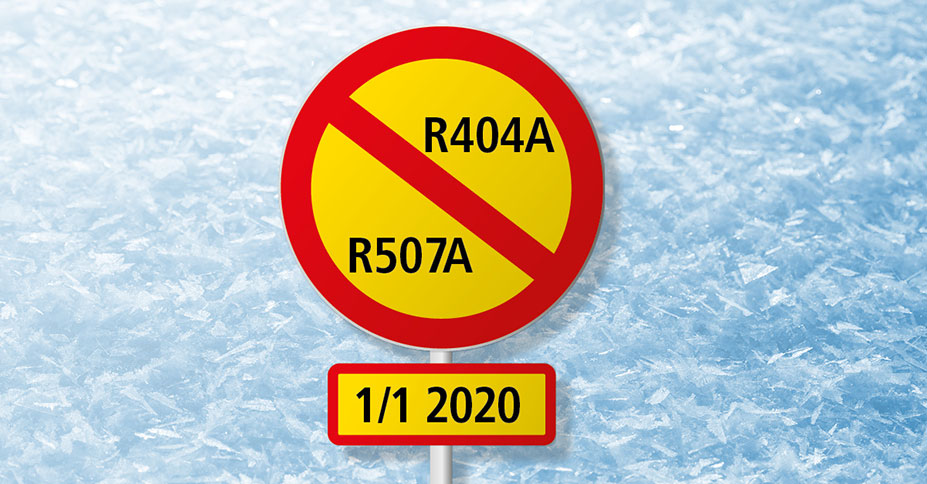Better cooling with lower environmental impact
Gone are the days when we had to salt our food or cover it with ice blocks to make it keep longer. Nowadays, we take it for granted that we can keep food cold in the fridge at home or in the supermarket, and keep ourselves cool on hot days at work or in the car. However, these cooling systems have also come at a price, in the shape of environmental impact.

The principle for conveying heat
Systems for cooling are based on the principle that when a liquid evaporates, heat is absorbed in the process. In a refrigerator, for example, a refrigerant circulates in a closed circuit comprising an evaporator, a compressor and a condenser. Refrigerant is used in machines that cool things, such as fridges, freezers and air-conditioning systems, and also in machines that heat things, such as heat pumps. The refrigerant switches between a gaseous and liquid state. For the liquid to evaporate heat is needed, and the heat needed is absorbed from the air inside the fridge. This reduces the temperature inside the fridge. A heat pump works according to the same principle as a fridge, but in this case the heat is taken from rock, soil, air or water and pumped into the house.
The environmental impact of refrigerants
The refrigerants used today are usually fluorine based, i.e. fluorinated gases or F-gases. If these F-gases escape into the atmosphere, they contribute to the greenhouse effect in the same way as carbon dioxide emissions. The big difference is that many of these F-gases are far stronger greenhouse gases than carbon dioxide. An emission of 1 kg of R404A refrigerant is equivalent to 3,922 kg in carbon dioxide emissions.
Environmental impact is measured in a parameter known as GWP (Global Warming Potential). The value denotes the scale of greenhouse effect in relation to carbon dioxide. A high GWP means a higher contribution to the greenhouse effect.
European regulation to reduce the greenhouse effect
In Europe there is a desire to reduce emissions of fluorinated greenhouse gases, since they have such a dramatic impact on the greenhouse effect and thereby the Earth’s climate. The European F-Gas Regulation therefore came into force in 2015. The F-Gas Regulation gradually limits the sale of F-gases in the EU, and forbids the use of refrigerants with a high environmental impact in new installations and servicing.
Tougher legal requirements for cooling installations from 1 January 2020
To date the new regulation has not affected that many companies. However, companies that deal with heat pumps, refrigeration and freezing installations etc. that contain refrigerants will soon be considerably more affected. 1 January 2020 sees the next stage of the F-Gas Regulation coming into effect, i.e. a ban on installing refrigeration and freezing systems that have refrigerants with GWP >2,500, and also refilling such systems with a new refrigerant.
These new requirements will force many supermarkets, food producers and other companies to change their cooling systems.
New refrigerants = new lubricants
In the cooling circuit, the refrigerant and lubricant come into contact with each other in a homogeneous mix. The mixing of these is tremendously important to the function of, say, a refrigeration installation. The refrigerant cools, while the oil lubricates and protects against wear.
The right type of lubricant is required to ensure correct functioning, and as installations switch to lower-GWP refrigerants, the lubricant must also work with the refrigerant. Natural refrigerants like CO2 and ammonia both require an optimised refrigeration oil.
Our refrigeration oils
Find more information about our refrigeration oils here. If you need any help, please don’t hesitate to contact us.
Further information about fluorinated greenhouse gases.
- Norwegian Environment Agency Informasjon til kuldebransjen (currently in Norwegian only)
- Swedish EPA Vägledning om fluorerade växthusgaser (currently in Swedish only)
- Swedish Chemicals Agency – Kort om reglerna för växthusgaser (currently in Swedish only)
